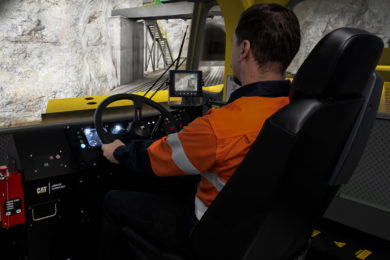Irfan Ali, Chairman, TharPak has written in the World Coal Association’s Cornerstone publication (Volume 4, Issue 1) about Pakistan’s dire energy shortages and some of the plans to overcome the problems and address the shortfall.
“Pakistan’s coal reserves are hugely underutilized,” he writes. “The Thar coalfields are estimated to hold about 175,000 Mt of low-rank coal that is yet to be mined. Although sufficient infrastructure is not currently in place, the Thar coal resources could probably support 100 GW of electricity production for 200 years. At a time when power shortages in Pakistan are estimated to cost the economy 2–4% of GDP growth and lead to closure of factories and other important employers, harnessing this indigenous fuel is increasingly attractive.
“The first permits for mining the Thar coalfields are moving forward. In addition, developers have opted to build a circulating fluidized bed (CFB) for the first coal-fired power plants using Thar coal. Using CFBs is important because they can successfully utilize low-rank coal like that found in the Thar coalfields. Emissions are also more easily controlled using CFBs, because they produce less NOx due to lower temperature operation, and limestone in the boiler immediately captures most SOx. While this is an important first step, CFBs and other coal-fired power plants are not able to address the need for additional natural gas. In addition, CO2 emissions would need to be mitigated through carbon capture and storage (CCS). However, there is a way that Pakistan can use its large coal resources to meet energy needs beyond electricity generation and largely mitigate criteria emissions as well as CO2.
“Several project developers are looking to produce and utilize the coal resources in the Thar coalfields. One innovative example is TharPak, a consortium of clean energy companies aiming to deploy a suite of technologies including the use of gasification-based polygeneration to produce synthetic natural gas (SNG) and electricity for Pakistan in an environmentally sustainable manner.
“Three specific technologies are envisioned as part of the TharPak project. First, the DryFining™ process, which has been developed and demonstrated by Great River Energy in the US, will be applied to dry the low-rank Thar coal prior to gasification. This process utilizes waste heat in a fluidized bed process that removes moisture and some sulphur and mercury from coal. This dried coal is also rendered more stable, can be economically transported over longer distances, and is less prone to spontaneous combustion.
“Second, KBR’s transport reactor integrated gasifier (TRIG™) will convert the treated low-rank, high-moisture coal into syngas (CO + H2). TRIG has been demonstrated on low-rank coals and is now commercially available. The syngas can be converted into synthetic natural gas (SNG) and/or electricity. The criteria emissions from the process are lower, and the CO2emissions can also be captured, used, and/or stored to generate low-emissions energy. In the process used to make SNG, the CO2 must be separated, making its capture far more economical than conventional methods.
“TharPak aims to use some of the captured CO2 in Algenol’s algae-based process, which can generate liquid fuels as a product at a projected cost of $1.30/gallon. The CO2 emissions can also be captured and processed for use in enhanced oil recovery (CO2-EOR) using commercially available processes.
“An added benefit of the Algenol process is that it uses saline water and produces two gallons of fresh water for each gallon of fuel produced. There are several large salinated aquifers between the coal seams of the Thar field that are estimated to be the size of giant lakes. The area around is not only arid, the population is among the poorest in Pakistan and an abundant clean water source could help transform the area with agricultural uses year-round. Thus, TharPak’s combination of these proven advanced technologies can help meet demand for electricity and natural gas, while also capturing CO2 emissions. It is also worth mentioning that several heavy oil fields in the vicinity of the Thar coalfields which have been in production since the 1960s could be recipients of some of TharPak’s CO2 to aid in CO2-EOR.
“Integrated gasification and combined-cycle (IGCC) facilities that produce electricity exclusively have faced economic headwinds abroad. IGCC will be deployed to produce electricity only if it is economically competitive. Low costs for coal production and lower labour rates in Pakistan could enable economic IGCC even as it has been overly expensive elsewhere.
“The SNG being produced would need to compete with new sources of natural gas for Pakistan, including expensive LNG. Based on initial estimates, TharPak is confident that, even at the current low prices in the LNG market, the SNG produced by its process will be competitive. Less dependency on imported fuel would add to Pakistan’s energy security and avoid the other environmental risks associated with transporting fuels long distances.
“TharPak has been allocated Block IX of the Thar coal resource and is now working to secure the capital needed to advance the project. Although most development banks and other NGOs do not support developing Pakistan’s coal resources, there is a strong argument for doing so, especially if environmental concerns are addressed throughout the process.”










